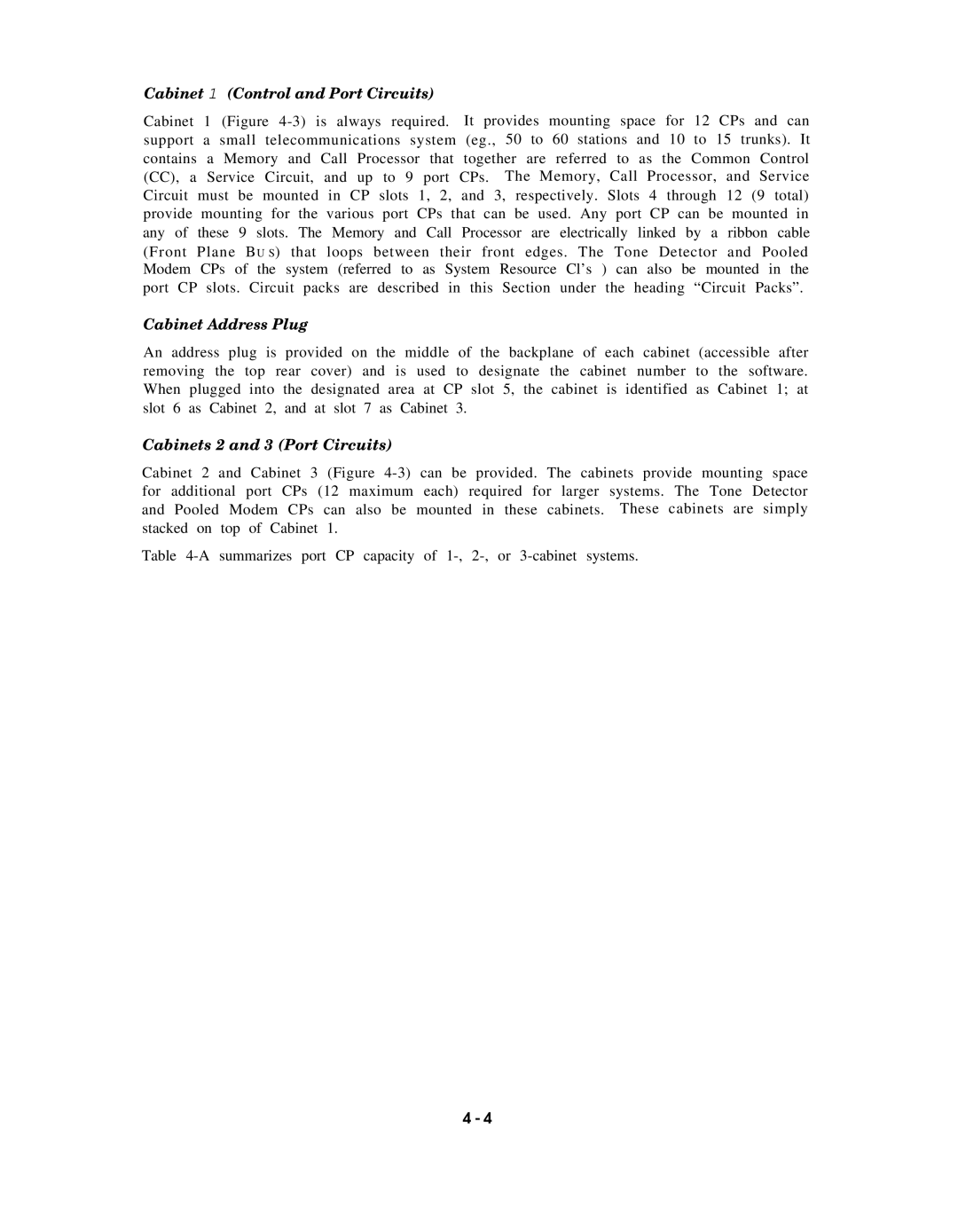Cabinet 1 (Control and Port Circuits)
Cabinet 1 (Figure
Cabinet Address Plug
An address plug is provided on the middle of the backplane of each cabinet (accessible after removing the top rear cover) and is used to designate the cabinet number to the software. When plugged into the designated area at CP slot 5, the cabinet is identified as Cabinet 1; at slot 6 as Cabinet 2, and at slot 7 as Cabinet 3.
Cabinets 2 and 3 (Port Circuits)
Cabinet 2 and Cabinet 3 (Figure
Table
4 - 4
